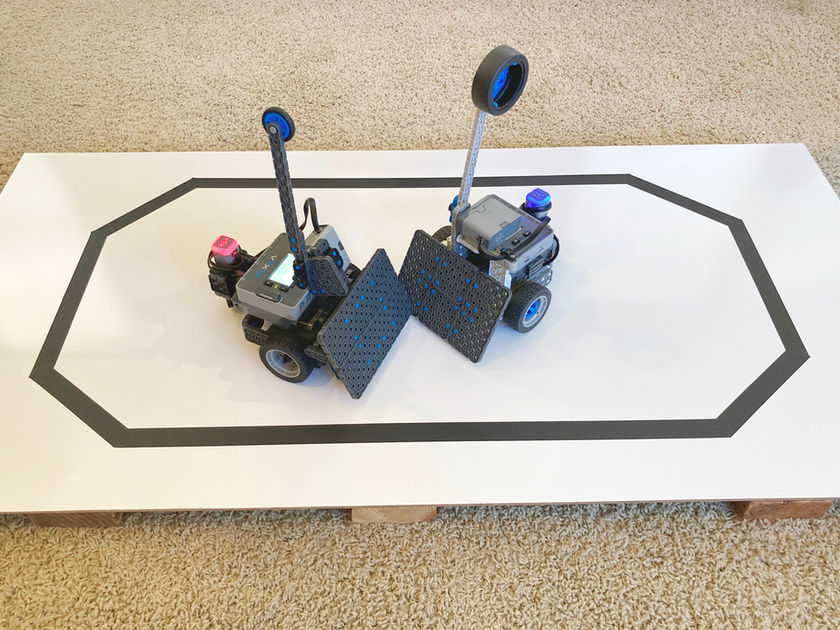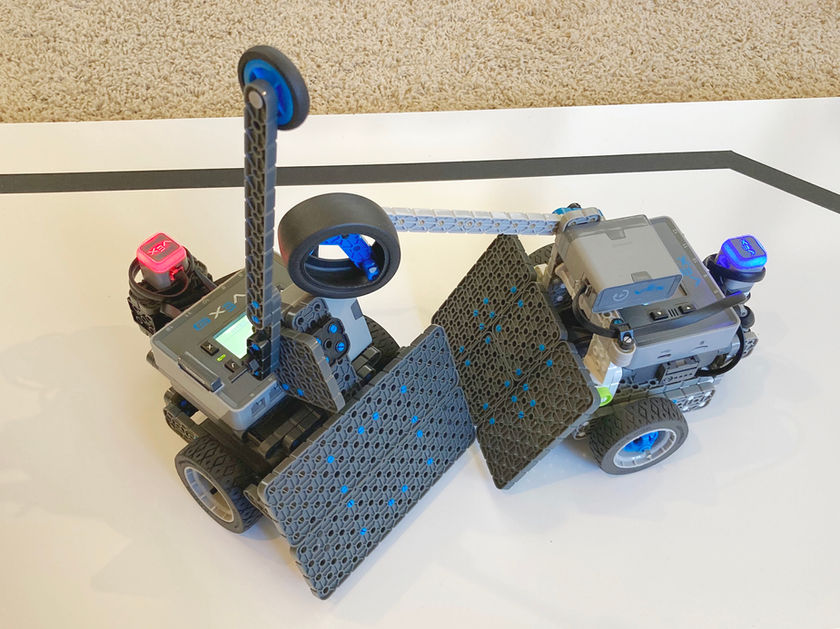Vex IQ Super Kit (1st gen)
Battle Bot
This design adds an arm to the Sumo Bot that can swing forward or backward to strike your opponent. With this, you can play a more complex and exciting form of Robot Sumo that we invented at my school. We called it "Battle Bots", but unlike other kinds of "Battle Bots" where the object is to damage and disable the other robot, the soft bopper here is designed to do no damage, and you can just count points instead.
You can have the robots play autononously, or entirely remote controlled, or a hybrid/mixture of the two. The three sample programs provided here can get you started with all three variations.
This game is an extension of Robot Sumo, so I suggest that you start with the Sumo Bot project first, then try adding arms and running this extended game. See the notes below for some tips and ideas.
Playing Battle Bots
You can make up your own rules, but here are some ideas that I have found work well.
1. Start by preparing for and playing Robot Sumo (see the Sumo Bot project) and get that working before adding arms and trying Battle Bots. I suggest trying all three alternatives of autonomous, remote controlled, and hybrid/combo.
2. As with Sumo, you can modify the robot and the programs to try to get an advantage. You may want to set weight and size limits on the robots.
3. A Battle Bot match and round is similar to a Robot Sumo match and round except that there are now two ways to win a round. You can score the most strikes, or you can win instantly by pushing the other robot outside the ring (driving out accidentally is the same as being pushed out).
4. A time limit on the round determines how long it can last, but if a robot goes outside, it is instant win for the one still inside. If you make it to the time limit, the robot with the most strike points wins.
5. It is more interesting if you don't allow multiple points for repeated strikes when two robots are stuck together and bopping each other repeatedly. So, a strike only counts if the robots are not otherwise touching, or if they are touching (e.g. one is pushing the other) then each robot can score at most one strike as long as the robots are in contact. To score again, the robots need to separate first.
6. There is typically a lot of action, so it helpful to have at least one referee, or maybe two (one to watch each robot), to count strikes and call out-of-bounds, and also a timekeeper.









